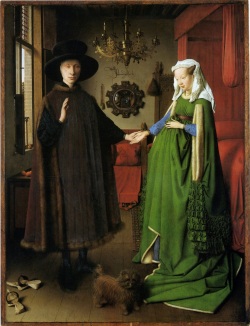The Ultimate CLIL Experience
Merve Babiker, Turkey
Merve is an English instructor at the Foreign Language Preparatory School at Gediz University located in Izmir. She is interested in discovering different teaching approaches and enjoys working with a variety of students with different backgrounds.
E-mail: merve.babiker@gediz.edu.tr

Menu
Introduction
Inside a CLIL Lesson
Keeping active
Conclusion
References
“CLIL programmes, whether they are extensive or limited, aim at causing language acquisition to take place (the natural way) in a foreign setting (which would usually require language learning) by teaching in the target language” (Is this the end of the language class?, Kari Smith)

Wordle
Hania Kryszewska makes a great point at how a class centered on CLIL is concerned with shifting the [unnatural] learning process of learning a language within a classroom to a more [natural] environment. This pretty much means making the learning process as unconscious and comfortable as possible for the student- similar to that of a child.
Before taking Hania’s, class I had little knowledge of what a CLIL lesson consisted of. The course: Content and Language Integrated Learning for Universities focused on a variety of topics ranging from teaching English through content to lexical chunks, with an emphasis on using authentic publications and online resources as much a possible. The use of authentic materials such as articles, pictures, videos and songs was an integral part to the ultimate CLIL classroom, which Hania made a point to stress throughout the course.
During the course, encountering many of the strategies commonly used within an ESL classroom was quite comforting. While it was great to be on somewhat familiar territory, the truly fascinating concept was how these well-known approaches (with a little twist) could just as easily be used in a CLIL environment, teaching a subject completely unrelated to language learning, with subjects spanning from chemistry to music.
In order to activate the different senses, we started off with the term ‘VAKOG’, which may seem familiar as it deals with our visual, auditory, kinesthetic, olfactory and gustatory senses. As with most areas of life, it is always important to use as many senses as possible when tackling a task. Hania lead with a dictation exercise, exploring what a CLIL reading lesson would look like. Using Arnolfini’s famous painting of newlyweds, Hania then had the group explore different senses within the picture.

Arnolfini Wedding
With the painting as a focus point, the participants continued with a series of exercises including question writing, answering, dictation of true statements and justifying these statements made about the picture. This included statements involving making guesses about the context of the picture, which was interesting as we were able to be quite creative with our interpretations.
The fact that a great deal of importance for creating an environment where students could use their imagination and creativity was once again apparent with the reading texts. The four texts we were asked to analyze were all different interpretations of the Arnolfini painting. After analyzing these texts, the group then went onto a variety of activities based on the reading. These included finding word chunks (lexical approach) from the texts, explaining the chunks to group members and using the text for additional language work such as grammar and vocabulary exercises.
The last part of the CLIL reading lesson involved a particularly engaging set of activities. Taking a look at some different pictures and various poems on those pictures, we were asked to write our own short poems. The catch was to only use chunks we had worked with from the Arnolfini texts.
Ending the example CLIL lesson with an analysis of the lesson plan, materials used, interaction patterns between students and the elements of classroom management not only allowed for a quick recap of the process, but also created a clear imagine of a CLIL lesson in our heads.
The structure of a CLIL reading lesson:
- Lead-in
- Pre-Reading
- While- Reading
- Post- Reading
- Follow-up
Throughout the course, Hania demonstrated how a variety of activities could be used at any point of the CLIL lesson in a number of different subjects. Once again, looking at as much authentic material as possible, we were introduced to numerous online materials that can easily be found and used in the classroom.
Here are a couple of noteworthy activities bursting with creativity:
1. An interesting Lead-in activity for teaching the Periodic Table in a CLIL chemistry class
Using the song “The Elements by Tom Lehrer”, the students are asked to note down as many elements as they can. As the song is quite fast, the students need to pay close attention to the lyrics. The students are then asked to go around the classroom and add to their lists of elements using the help of their classmates.
To recap the arrangement of the elements in the period table along with specific groups of elements, another activity consisted of each student being assigned an element. The students were then asked to place themselves in the correct location in regards to the table. After having successfully positioned themselves, in groups (ex. Noble Gases), students had to describe their group using the specifications the particle group of elements (ex. Noble Gases: stable, richest of all elements, not commoners etc.)

2. Another Lead-in activity concentrated this time on music
As a warm-up activity for a lesson on the piano and pianists, the participants were split into two groups. While one group was asked to make a list of the clothing a pianist wears, the other group was responsible for writing down the parts of a piano. The vocabulary exercise was designed as a way for students to draw from their previous knowledge. The speaking activity that followed looked at a childhood favorite, a video of Tom and Jerry. The clip, titled “The Cat Concerto” shows Tom trying to play the Hungarian Rhapsody by Franz Listz, as Jerry makes his job all the more difficult. With the participants split into pairs, each pair stood facing each other. While one student’s back was facing the video, the other had a clear view. Then came the fun part. The student facing the video had the job of describing everything that they saw while using as much of the vocab words as they could from the previous activity. After about a minute, the students changed roles.
This activity was particularly enjoyable as the video clip was quite funny.
Ending the course with a mini CLIL lesson that we prepared in pairs was a great way to conclude the course. Putting all the information that we have learned throughout the course into a 45 minute lesson really allowed us to recall and effectively use our new found knowledge to deliver and create as much of a natural learning environment for our students as possible.
Is this the end of the language class?, Kari Smith
www.theguardian.com/theguardian/2005/jan/21/guardianweekly.guardianweekly1
“The Elements by Tom Lehrer”, www.youtube.com/watch?v=zGM-wSKFBpo
“The Cat Concerto”, www.youtube.com/watch?v=som4dmHQasg

Please check the CLIL for Secondary Teachers course at Pilgrims website.
Please check the CLIL for Universities course at Pilgrims website.


|